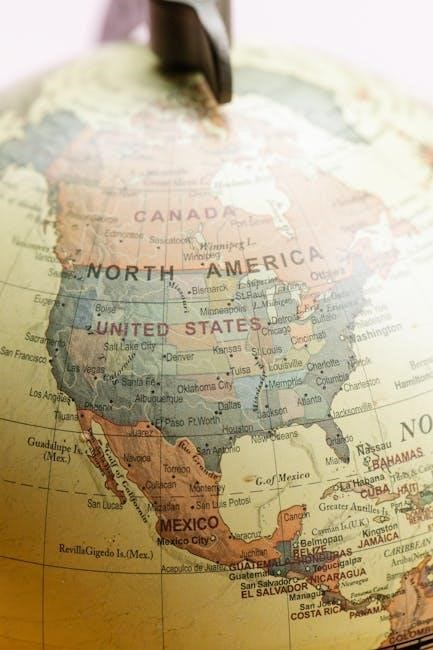AP World Unit 4 Study Guide: Transoceanic Interconnections, c․ 1450 to c․ 1750
Unit 4 explores global connections, maritime empires, economic systems, cultural exchanges, and social changes between 1450 and 1750․ It highlights the rise of European exploration, trade networks, and technological diffusion, shaping the modern world․
Unit 4 of AP World History focuses on transoceanic interconnections from 1450 to 1750, a period marked by unprecedented global interactions․ This era saw the rise of maritime empires, the expansion of trade networks, and the exchange of cultures, technologies, and commodities․ European exploration, the Columbian Exchange, and the development of new economic systems reshaped societies worldwide․ This unit introduces key themes such as globalization, cultural diffusion, and the impact of environmental and demographic changes․ It sets the stage for understanding how these connections laid the foundation for the modern world, emphasizing the interconnectedness of human societies during this transformative period․
1․2 Key Themes and Concepts
Key themes in Unit 4 include global interconnectedness, cultural exchange, and the impact of technological advancements․ Maritime empires, such as European, Ottoman, and Ming/Qing, played central roles in shaping global trade and power dynamics․ Economic strategies, like mercantilism, and labor systems, including chattel slavery, are critical concepts․ The Columbian Exchange, technological diffusion, and environmental changes are emphasized, along with social hierarchies and gender roles․ Understanding these themes provides insight into how transoceanic connections transformed societies, laid the groundwork for globalization, and influenced modernity․ These concepts are essential for analyzing the complexities of the early modern world․
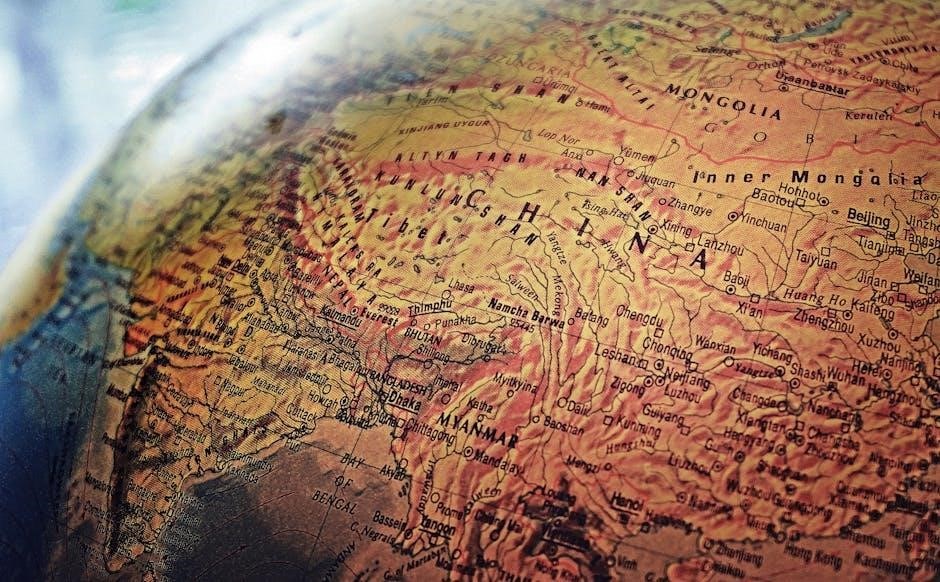
Maritime Empires: Establishment, Maintenance, and Development
European empires expanded through exploration, colonization, and naval dominance, while non-European empires like the Ottomans, Ming/Qing, and Mughals maintained power through strategic trade and military strength․
2․1 European Maritime Exploration and Colonization
European maritime exploration and colonization from 1450 to 1750 were driven by economic, religious, and political motivations․ Portugal and Spain pioneered oceanic voyages, establishing trade routes and colonies in the Americas, Africa, and Asia․ The development of technologies like the carrack and astrolabe facilitated navigation․ European powers competed for resources, leading to the transfer of goods, diseases, and cultures․ The Columbian Exchange reshaped ecosystems, while colonization disrupted indigenous societies․ Over time, other European nations, such as the Netherlands, England, and France, joined the race, expanding global connections and laying the groundwork for modern imperialism․
2․2 Non-European Maritime Empires (Ottoman, Ming/Qing, Mughal)
The Ottoman Empire dominated maritime trade in the Mediterranean and Indian Ocean, controlling key routes and ports․ The Ming Dynasty initially pursued maritime expansion through Admiral Zheng He’s voyages but later shifted focus to land-based consolidation․ The Qing Dynasty, succeeding the Ming, prioritized coastal defense over overseas exploration․ The Mughal Empire, while not a naval power, facilitated trade connections between India, the Middle East, and Europe․ These empires utilized their maritime capabilities to strengthen economic and political influence, though their approaches varied significantly, reflecting regional priorities and cultural values․ Their strategies shaped global trade patterns and regional power dynamics during this period․
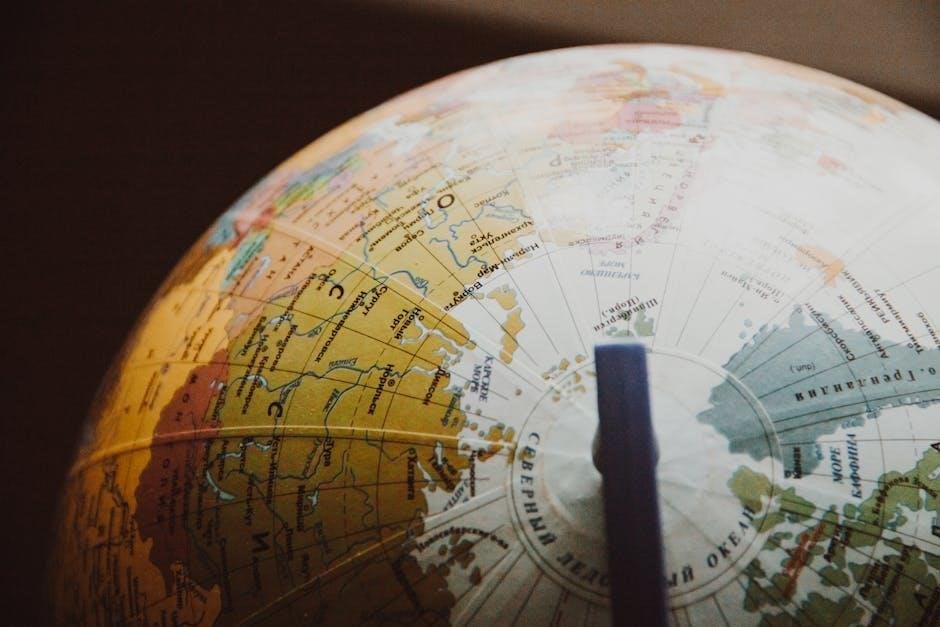
Economic Systems and Strategies
This section examines the economic strategies employed by empires to maintain power, including mercantilism, taxation, and monopolies, shaping global trade and wealth distribution during 1450–1750․
3․1 Economic Strategies of Empires
Empires utilized diverse economic strategies to consolidate power and expand influence․ European nations like Spain and Portugal employed mercantilist policies, controlling colonies to extract resources and restrict trade․ The Ottoman Empire focused on centralizing revenue through taxes and tributes, while Asian empires such as the Ming and Qing dynasties managed state-controlled monopolies․ These strategies aimed to maximize wealth, stabilize economies, and fund military endeavors․ Regional specialization and interdependence grew as empires established trade networks, fostering economic interconnections that laid the groundwork for global commerce․ Effective economic management was crucial for sustaining imperial dominance during this transformative period․
3․2 The Role of Trade Networks and Commodities
Trade networks flourished during this period, connecting Europe, Asia, Africa, and the Americas․ Key commodities like spices, textiles, silver, and enslaved people drove economic interdependence․ The Manila Galleons linked Asia and the Americas, while the Indian Ocean network dominated by the Ottomans and Chinese facilitated spice and porcelain trade․ European powers established monopolies over commodities such as sugar and tobacco; The Columbian Exchange introduced crops like maize and potatoes to Eurasia, transforming demographics and economies․ These networks not only enriched empires but also reshaped societies, fostering cultural exchanges and technological diffusion․ The reliance on specific commodities often led to regional specialization, deepening global economic connections․
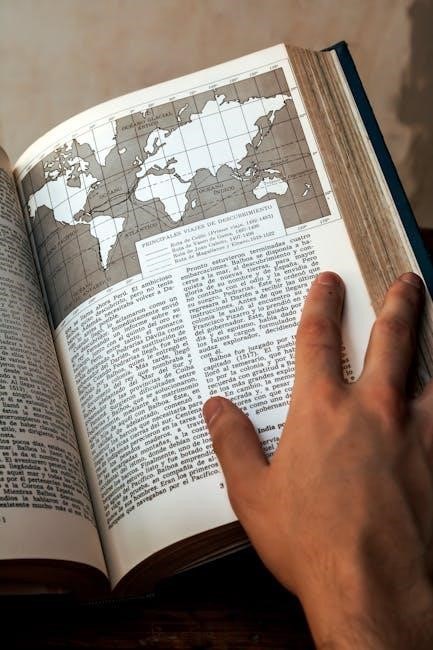
Cultural Exchanges and Diffusion
Cultural exchanges flourished as religions, ideas, and technologies spread across regions․ Christianity, Islam, and Buddhism influenced diverse societies, while scientific and artistic advancements crossed borders, fostering mutual understanding and innovation․
4․1 Religious and Cultural Interactions
Religious and cultural interactions during this period were profound, shaping societies globally․ Christianity spread through European colonization, while Islam expanded via trade networks and migration․ Buddhist and Hindu influences persisted in Asia, blending with local traditions․ Syncretism emerged as cultures intertwined, creating unique religious practices․ Missionaries played a key role in spreading faith, often aligning with political agendas․ Cultural exchanges fostered art, architecture, and literature, such as Islamic calligraphy influencing European designs․ However, religious conflicts also arose, leading to tensions and resistance․ These interactions reshaped identities, creating a mosaic of beliefs and practices that defined early modern societies and their global connections․
4․2 Technological Diffusion and Its Impact
Technological diffusion between 1450 and 1750 significantly impacted global development․ The carrack and fluyt ships revolutionized maritime trade, enabling faster and more efficient travel․ Gunpowder spread from Asia to Europe, transforming warfare and empire-building․ Printing technology facilitated knowledge dissemination, aiding cultural and scientific advancements․ Agricultural innovations like the heavy plow and crop rotation increased productivity․ Medical discoveries improved health, while navigational tools such as the astrolabe and compass enhanced exploration․ These advancements fostered economic growth, cultural exchange, and the expansion of empires, laying the foundation for global interdependence and modernity․
Social Systems and Labor
Societies between 1450 and 1750 experienced significant changes in labor systems and social hierarchies due to global interactions, empire-building, and economic shifts, reshaping traditional structures․
5․1 Changes in Labor Systems (Chattel Slavery, Serfdom)
Between 1450 and 1750, labor systems evolved significantly․ Chattel slavery expanded, particularly in the Americas, driven by plantation economies and transatlantic trade․ Slavery became racialized and hereditary, with enslaved people treated as property․ In contrast, serfdom declined in Western Europe but persisted in Eastern Europe, where peasants remained tied to the land․ These systems reflected broader economic and social transformations, shaping the global workforce and reinforcing inequalities․ The rise of maritime empires and colonialism intensified these labor practices, creating long-lasting impacts on societies worldwide․
5․2 Social Hierarchies and Gender Roles
Social hierarchies during this period were deeply influenced by wealth, status, and gender․ In many societies, women faced restricted rights and were often confined to domestic roles․ Patriarchal systems dominated, with men holding political, economic, and religious power․ In some regions, like Europe, the rise of witch hunts further marginalized women․ In contrast, certain African and indigenous American societies allowed women to hold influential positions․ The expansion of global trade and colonization reinforced existing hierarchies while creating new social stratifications․ Gender roles remained rigid, but economic shifts sometimes enabled women to participate in trade or agriculture, offering limited avenues for empowerment․
Environmental and Demographic Impact
The Columbian Exchange brought significant environmental and demographic changes, including the spread of diseases, population declines, and ecological transformations due to new crops and species introductions globally․
6․1 The Columbian Exchange and Its Consequences
The Columbian Exchange (1492–1650) reshaped global ecosystems by transferring plants, animals, people, and diseases between the Americas and Afro-Eurasia․ Crops like maize, potatoes, and sweet potatoes boosted populations in Europe and Asia, while horses and livestock transformed American societies․ However, Old World diseases devastated indigenous populations, causing massive demographic declines․ This exchange disrupted local economies and cultures, leading to long-term environmental and social changes․ It also facilitated the expansion of European empires by altering the balance of resources and labor systems, deeply influencing the modern world’s structure and global interconnections․
6․2 Disease, Population, and Environmental Changes
Disease spread, particularly smallpox and measles, decimated indigenous populations in the Americas, who lacked immunity to Old World diseases․ This led to significant population declines, destabilizing societies and disrupting economies․ Environmental changes followed as European crops and livestock replaced native flora and fauna, altering ecosystems․ Deforestation and soil depletion occurred due to expanded agriculture and mining․ The loss of labor forces in the Americas spurred the transatlantic slave trade, further reshaping global demographics․ These changes had lasting impacts on social structures, economic systems, and environmental landscapes, creating a new global order with profound consequences for human history and ecological balance․
Global Trade and Connections
Global trade expanded significantly, connecting Europe, Asia, Africa, and the Americas through maritime networks․ The Columbian Exchange and regional specialization fostered economic interdependence and cultural exchange․
7․1 The Expansion of Global Trade Networks
Between 1450 and 1750, global trade networks expanded significantly, driven by maritime exploration and the establishment of new sea routes․ European powers like Portugal and Spain pioneered these connections, linking Europe, Africa, Asia, and the Americas․ The Columbian Exchange facilitated the transfer of goods, ideas, and technologies across oceans, while regional specialization emerged as areas focused on producing specific commodities․ Trade networks, such as the Manila Galleons and the triangular trade, became central to economic interdependence․ This period saw the rise of joint-stock companies and the growth of global markets, laying the foundation for modern globalized economies and cultural exchanges․
7․2 Regional Specialization and Economic Interdependence
During this period, regions increasingly specialized in producing specific goods, fostering economic interdependence․ Europe focused on manufactured goods, while the Americas concentrated on cash crops and raw materials․ Asia, particularly India and China, specialized in textiles and spices․ Africa’s role in supplying enslaved labor became central to the transatlantic economy․ This specialization led to the development of complex trade systems, such as the triangular trade, where goods, labor, and capital flowed between regions․ Economic interdependence grew as regions relied on others for essential resources, shaping global trade dynamics and creating both prosperity and inequality․ This interdependence laid the groundwork for modern global economic systems․
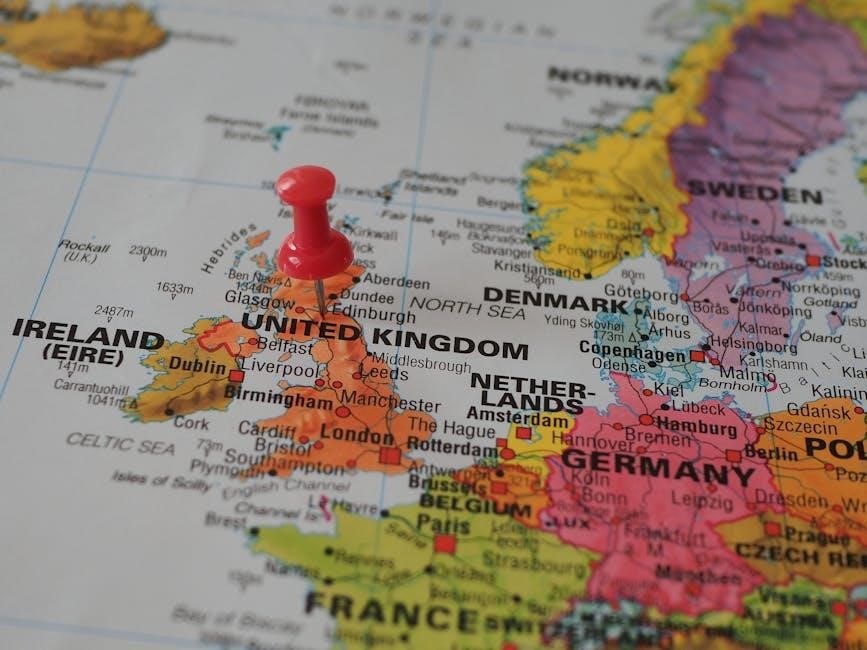
The Legacy of Unit 4
Unit 4’s legacy highlights the transition from the postclassical to the early modern world, laying the foundation for globalization, cultural diversity, and economic systems that shaped modernity․
8․1 The End of the Postclassical Period and the Emergence of the Early Modern World
The postclassical period concluded with the rise of centralized states and the expansion of global trade networks․ European exploration and the Columbian Exchange marked the transition to the early modern world․ This era saw the emergence of new political, economic, and cultural systems that reshaped global dynamics․ The decline of feudalism and the rise of capitalism in Europe, alongside the expansion of maritime empires, set the stage for modern globalization․ These transformations laid the foundation for the interconnected world of the early modern period, emphasizing state-building, economic interdependence, and cultural exchange․
8․2 The Foundation for Globalization and Modernity
Unit 4 highlights how the period from 1450 to 1750 laid the groundwork for globalization and modernity․ The expansion of maritime empires, global trade networks, and the Columbian Exchange created interconnected economies and cultures․ Technological advancements, such as navigation tools and the printing press, facilitated these connections․ The rise of centralized states and capitalism in Europe, alongside the decline of feudal systems, marked the transition to modern political and economic structures․ These developments set the stage for global interdependence, shaping the modern world’s social, economic, and cultural frameworks․
